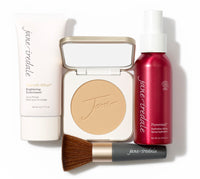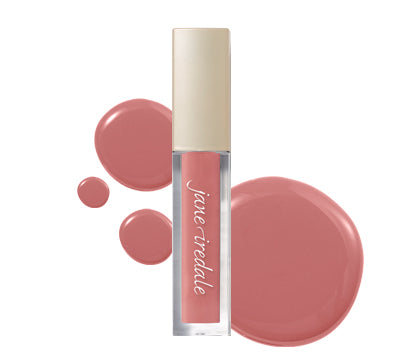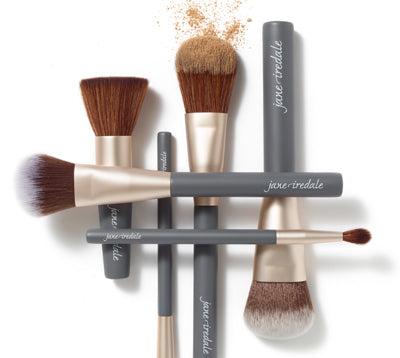
Have you noticed the term “clean beauty” has become the new buzz word in makeup? These two words are so much more than a catch phrase. They represent an evolution that has taken place in our industry which encompasses ingredients, manufacturing, testing and a world of other elements. Its standards require brands to leave out toxic ingredients and incorporate therapeutic ones, to harvest such ingredients in mindful ways, to test them in humane ways and to package them in responsible ways. Clean doesn’t just mean good for your body, it means sustainable for the environment and considerate to all creatures that live and will live in that environment. Let’s look at some reasons why switching to clean is a great decision.
Before Clean Beauty
Like many makeup artists of the 80s, I didn’t get into the beauty industry with any consideration for ingredients or formulations. For me, it was all about the look. It didn’t matter what I was using to achieve a flawless complexion as long as the final results looked perfect. I worked for years without realizing the collateral damage that many of the products I was using had on the skin. Perhaps it was easy to be oblivious because, so often my work was on photo shoots or productions working with models or actors that I would probably never see again. The funny thing is that it never occurred to me that healthy makeup might even exist until the late 90s when I started working with department store makeup brands and I began to hear the complaints of customers who would have reactions and breakouts from their purchases. When I started looking for healthier makeup brands, I realized how limited the options were. What I didn’t know at the time was that, in 1994 while I was still using a makeup kit full of toxic products, a visionary woman named Jane Iredale was launching a brand that would forever change the way people looked at makeup. In 2003, my path was dramatically altered when I was introduced to her products and switched to clean beauty. 17 years later, I still consider myself her biggest fan.
The beautiful thing is that stories like mine are becoming more and more common every day. With makeup artists and consumers alike, it has become quite clear that we would all prefer cleaner formulas. We would all much rather see an ingredient label that doesn’t frighten or confuse us. And so, the beauty industry is being forced to change in order to meet the overwhelming demand for such products. The trade secrets of beauty professionals are no longer just about what colors or finishes they use. Ingredients have clearly become just as important. This is excellent considering how far we’ve all come in the beauty industry.
A Dark Toxic History of Beauty Products
In 1940, it was common to see toxic ingredients in cosmetics because no studies had ever been published about the long-term effects of them. The words “endocrine disruptor” had never even been uttered and wouldn’t be for another half century. Many ingredients were not even known as toxic yet. By the 70s, a lot of harmful chemicals had been outlawed and cosmetic testing had become more stringent. And although technology had advanced for cosmetics production, an excess of archaic practices and ingredients stayed in place for decades to come. Even by the mid-90s, there wasn’t enough understanding of what ingredients such as parabens and phthalates were doing to our bodies. Luckily, people like Jane took it upon themselves to research ingredient lists, weed out the toxic ingredients that had been grandfathered in and source healthier alternatives. This process of replacing bad compounds for good ones, doing testing that was far above FDA requirements and seeking certification from organizations such as Ecocert raised the bar further than any company had ever raised it. Thus, the Clean Beauty Movement was set in motion.
I feel honored to be part of that evolution, but I must say that in the beginning, I couldn’t really see how clean ingredients would make any difference in the skin. All I knew was that our makeup felt better on my skin than anything I’d ever worn before. Why was it so good? What I didn’t realize was there are many different facets is the creation of clean beauty products.
We Start with a Need
Jane once told me and my team that the night before she decided to start our brand, she went to bed with the questions “What is wanted? What is needed?” in her head. She said “If you go to bed with the question in your mind, you’ll wake up with the answer.” That principal is still behind our product development. We don’t create a product unless we know it is meeting a need; and the ‘need’ can’t just be to keep up with what others in the industry are doing. The product must be something that will make a real difference in the lives of those who wear it. Once a new product idea is set, we start researching the best ingredients that can be used to create the highest quality version of that product. We must also combine performance with skincare value. The constant equation being worked out by our product development team is how to simultaneously make the product work better and be better for your skin. From our physical SPF foundations that soothe and calm to our lip products that offer hydration and antioxidant protection.
Old vs. New Makeup Ingredients
Ingredient alternatives – When formulating any product, there are lots of available ingredient options. And there’s a reason that things like talc are still so widely used in cosmetic production. They’re cheap! But a good profit margin no longer means success and longevity when cosmetic companies are being held to higher standards. If you wanted to create your own mineral makeup line, you could go to a variety of vendors around the world and you would be offered menus of ingredients with purity and grade levels that range from top of the line to bargain basement. But never will the phrase “you get what you pay for” be more obvious than when you’re putting these ingredients on your face. Here are some good comparisons to consider:
Old vs New
|
Talc – comedogenic, drying, does not reflect light thus giving the skin a dull, lifeless appearance. Accentuates lines and pores. |
Boron Nitride – non-comedogenic, reflects and disperses light to create a soft-focus effect. Minimizes the appearance of lines and pores. |
|
Mineral Oil – comedogenic, provides no real hydration and does not resemble natural sebum. |
Coconut Oil – non-comedogenic, very hydrating making it much healthier for skin. |
|
Synthetic Perfumes – fragrances that mask odors but cause redness and irritation. |
Essential Oils – can be key in formulation while giving aromatherapy and added health benefits. |
|
Parabens & Phthalates – preservatives that cause irritation, redness and, in some cases, are known endocrine disruptors. |
Botanicals & Antioxidants – just as effective at preserving products while adding skincare benefits without irritation or toxicity. |
|
Chemical SPF – causes irritation and redness and must be completely washed off before re-application to get optimal results. |
Physical SPF – soothes and calms the skin and can be re-applied over the top of existing SPF for longer wear. |
The Ecological Impact of Clean Beauty
It can’t just be about us – The last facet of this story is thinking outside of our own orb of existence and another great reason to switch to clean beauty. For as we know, we’re not the only ones involved in this picture. And the world around us will see the effects of what we’re now creating for centuries to come. So as a company, we take it upon ourselves to look at how our products are manufactured and tested to ensure it falls in line with the principals we are trying to uphold. That means no animal testing. Cruelty-free products are just as effective and I, for one, feel better when I buy them. It also means using recycled and recyclable componentry and packaging whenever possible. Your children’s children will thank you. And finally, we must be conscious of where things are sourced. We look for sustainable farming practices when sourcing all our botanicals.
So as millions of consumers around the world continue using their beauty products, we will continue to seek the best ingredients to put into them. And as you do your personal beauty routine today, perhaps you’ll feel good about turning the container over and looking at the label to see what ingredients you’re using. If not, please know that we’re here to show you alternatives and help you embrace the world of clean beauty.







